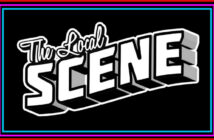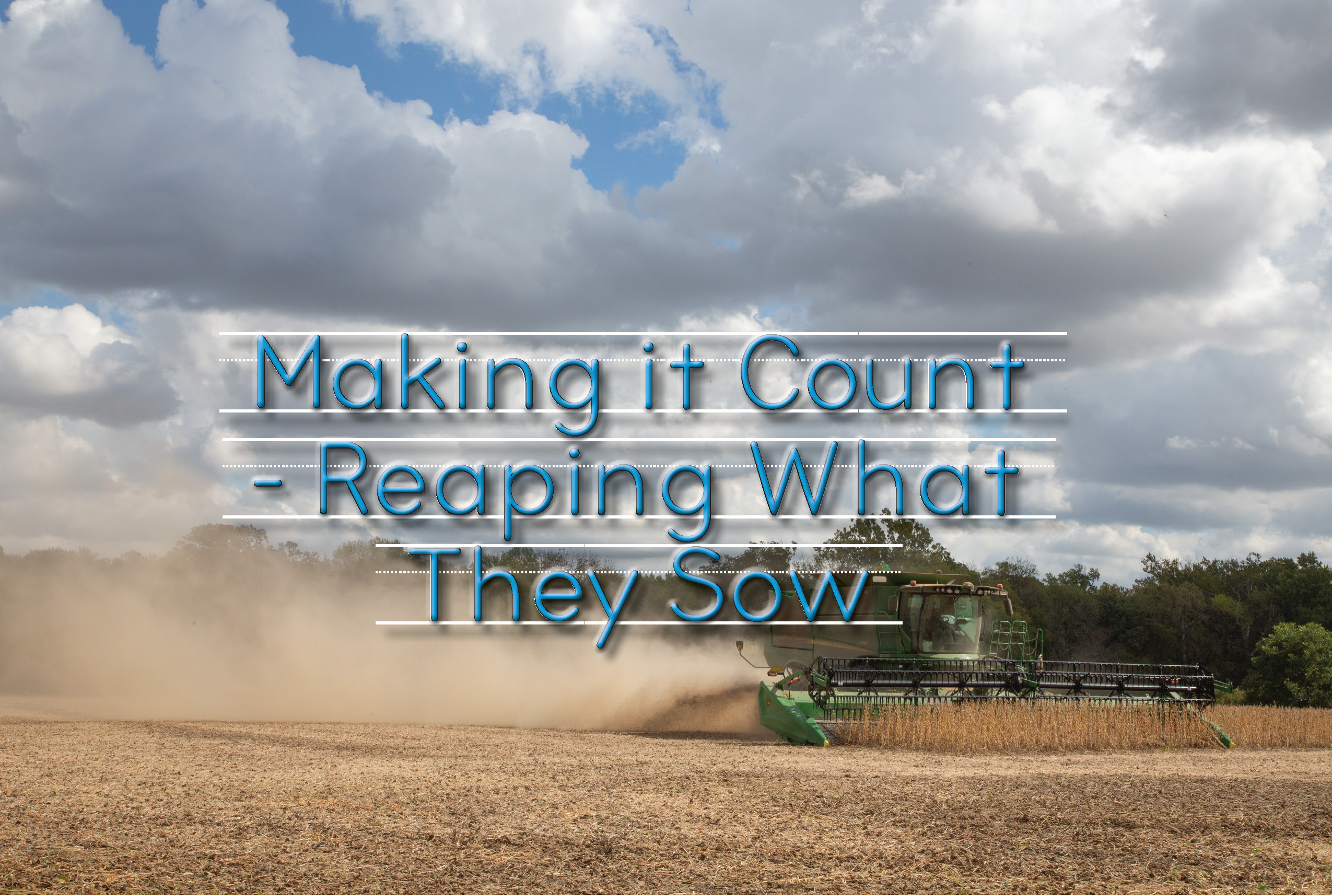| story by | |
| photos by | Steven Hertzog |
| OPEN A PDF OF THE ARTICLE |
The intriguing marriage of the disciplines breaks through barriers of the norm and offers limitless possibilities for new connections.

The Art of Math-ematics
It has been said that high-level math is more similar to abstract art than science. This idea might be confusing to a layperson. “… art is largely benefitted by creativity, but that creativity isn’t limited to art. In the same way that once you know how to carve or paint, once you get the math basics under your belt, then you can do creative things with them,” says Paul Hurtado, University of Nevada-Reno associate math professor.
In the 2022 “Science & Technology” article “Math as Art,” Michelle Werdann writes that math is often found in art, but many mathematicians feel the math itself is art, that the formulas are elegant and the graphs beautiful.
So how is math more like art than science? How do creativity and new ideas play into the beauty of math? How do creatives harness math as one of their tools in their visionary approaches?
Barbara Kerr, Ph.D, a Williamson Family Distinguished Professor of Counseling Psychology and co-director of the Center for Creativity and Entrepreneurship Education at the University of Kansas (KU), as well as author, recommends a classic article based on a lecture by author and mathematician Paul Richard Halmos, who spends a good amount of time describing what math isn’t before defining what it is. It’s as if trying to describe an elephant to someone who is seeing impaired, he explains, or how a visual artist spends time defining and drawing in the negative space of an object to understand and focus on the objective, realizing it’s all truly important to understanding and communication.
According to his 1968 “American Scientist” article “Mathematics as a Creative Art,” Halmos states, “Mathematics is abstract thought, mathematics is pure logic, mathematics is creative art. All these statements are wrong, but they are all a little right, and they are all nearer the mark than ‘mathematics is numbers’ or ‘mathematics is geometric shapes.’ For the professional pure mathematician, mathematics is the logical dovetailing of a carefully selected sparse set of assumptions with their surprising conclusions via a conceptually elegant proof. Simplicity, intricacy and, above all, logical analysis are the hallmark of mathematics.”
LOCAL MATTERS
Our Local Advertisers – Making a Positive Impact
Some examples of formulas in action further clarify creativity in math, or mathematics in creative motion, including a programmed app or program user experience, the background being a complex arrangement of ones and zeros that don’t mean much to nonprofessionals. When an audience is viewing creative work, whether dance, music, visual art, film, mixed media or other expressions, it has only what it brings to that moment in life. For some, this might be a certain level of intellectual understanding, others lived experience, some limited contact, travel, trial and error. Based on that experience, each person will see these moments through his or her own proverbial lens.
The beauty of the design, physics and math of an engine under the hood of a car, the ways the woven patterns are calculated and organized in a rug, the statistics of a baseball game, the stock market analytics may only be interesting to those who care enough about that subject. The depth of a concept or backdrop may be lost to those who don’t naturally make these connections. Perhaps it’s what meets the eye, such as the beauty of fractals, or the ear, such as the sound wave patterns heard and visualized in sand made by certain frequencies. These may start to resonate in some and start creative conversations around the math that calculates our world.
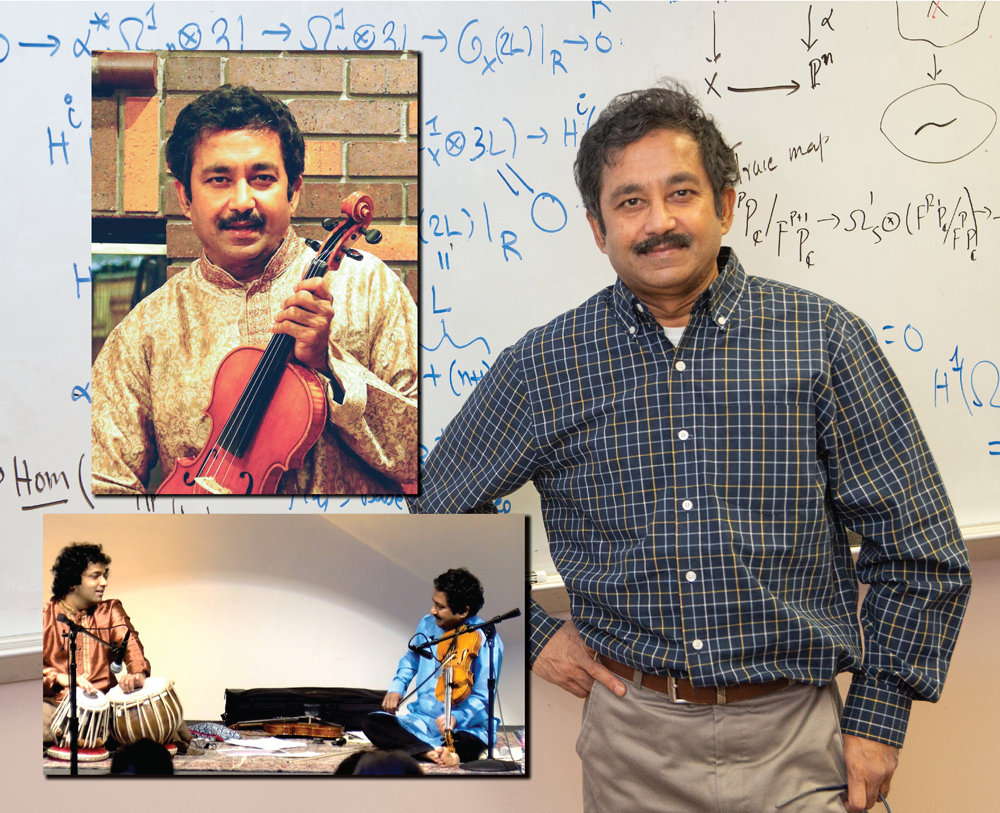
Purnaprajna Bangere, KU math professor and musician
The Harmony of Math and Music
Purnaprajna P. Bangere, professor of mathematics and music at KU’s Hall Center for the Humanities, has combined his two passions, math and music, into his work. He uses algebraic geometry to incorporate classical East Indian music with various Western styles, including jazz and blues. This new style of music has been a lifetime in the making from an idea he conceived as a child.
Bangere followed in his father’s footsteps, also a mathematician and teacher, and his entire, very musical family. At a young age, he trained intensively in classical East Indian violin with some of the best teachers and musicians in the world in the Parur style of Indian classical music. He gives credence to his guru, Vid. Sri H.K Narasimha Murthy (affectionately HKN), from their shared hometown of Mysore, India: “HKN Murthy, one of the great teachers of the violin in south India and in his heyday, was an important accompanist. Without him, I do not know what would have happened.”
As he was growing up studying Parur music, he also listened to Western classical music. He came to the United States to get his Ph.D. in mathematics at Brandeis University, in Waltham, Massachusetts, and he was missing home. He was exposed to the blues and jazz, which really moved him. He remembers, “It has a certain character that lodges into you at a time of intense homesickness and self-doubts. So it did. But even outside of these great traditions have great structural beauty that is mesmerizing. In fact, blues and jazz, like microtones, play a critical role in the ‘Metaraga system.’”
Bangere continues to practice and play the classical music of India while also exploring Western music, which inspires him. He believes, “America is THE place for music. American musical culture is a vast, all-enveloping, inclusive series of paradigms. Genres interact and give rise to new creative music like no other place in the world…. I owe much to my adopted country. Only in America this multidisciplinary work could have happened. The American audiences, in my experience, are some of the most open-minded I know. They have been deeply affectionate toward me. I am very grateful to them.”
“The meta-geometric framework of mathematician Alexander Grothendieck is a perfect language to capture ideas in music,” Bangere continues. Joining this meta geometric framework uses a self-created Metaraga system on the music side. This system has its own grammar and accompanying syntax. It does not have an East or West sound, but a whole new sound somewhere in no-man’s-land that is created.
The result opens new frontiers with exciting new sounds and structures that transcend known genres of music. The Purna Loka Ensemble, Bangere’s current focus, was formed as a collaboration with Grammy Award-winning violinist and director of Turtle Island String Quartet, David Balakrishnan. Joining Bangere and Balakrishnan to complete the ensemble are bass virtuoso Jeff Harshbarger and Amit Kavthekar on Tabla. Their first album, “Metaraga,” was released on Jan. 17, 2020, according to the group’s website. The sound is inspired by other elements besides “math,” and the possibilities are seemingly limitless.
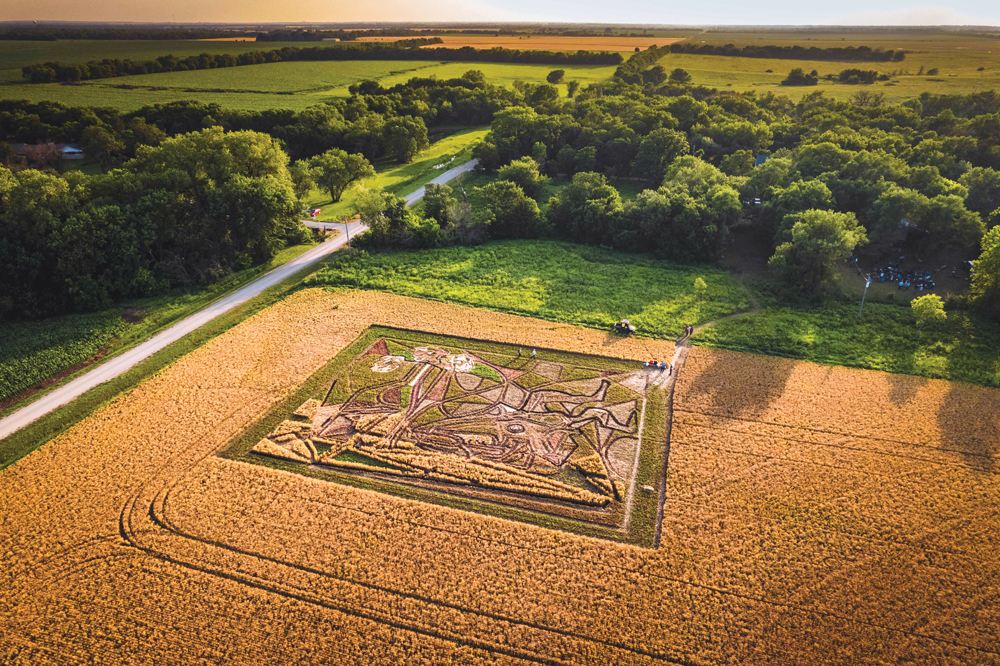
A wheatfield next to cellist Susan Mayo’s central Kansas farm house is the canvas for Stan Herd and his crew to create Picasso’ Goat Skull and Rose
The Movement of Earthworks
What if the earth was your creative outlet? Land is the medium that well-known native Kansan and Lawrencian visual artist Stan Herd uses to produce his work. Herd is an activist and heavily involved in the community, promoting music, film and the arts in America’s heartland. He is one of the founders of “Prairie Renaissance” with filmmaker Kevin Willmott. According to his website, “Stan Herd’s action through activism and community involvement has helped define this new art form while embracing his love of the land and the first native peoples of the Americas, whose embrace of nature defined their culture. As a progressive activist, Herd has embraced this community-driven art form to bring attention to a multitude of issues showcasing the environment, science, sustainable agriculture and the humanities, which all connect on a common theme regarding the ‘human condition’ in the world today.”
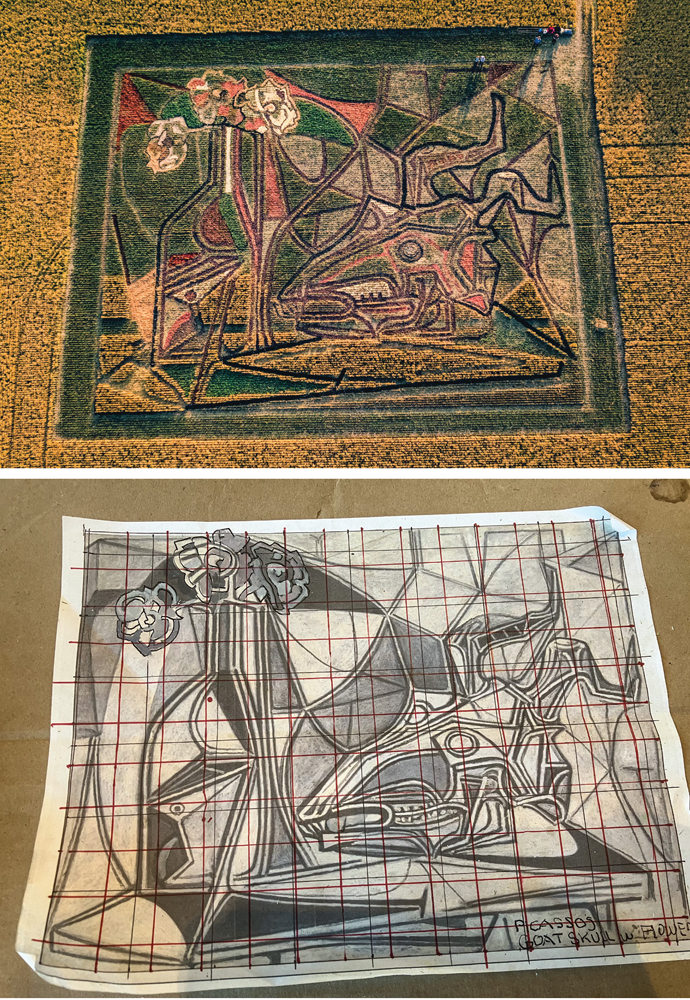
Top: The acre image on the ground is about the size of a football field. Mulch-compost, sand, straw, and grass-near Peabody, Ks; Bottom: The Grid is but a small part of the math involved in every earthwork
Herd has spoken about his earthwork at the TEDxPSU conference at Pennsylvanian State University. His talk was titled “I Made an Earthwork the Size of a New York City Block. Here’s How it Changed Me.”
Herd has created works all over the world, from our backdoor at the Dole Institute of Politics, in Lawrence, Kansas, to many locations around the U.S. and in other countries such as Australia, Brazil, China and Cuba. He is currently preparing to work on two Fibonacci earthwork constructions (possibly the most complex math-related projects in recent history), one in Oklahoma and one in Shanghai, China. Qatar is also a potential location. The project has been in concept for more than 10 years. His entire process is built on the simplicity of a grid-enlargement system, which is simple to describe but more challenging to realize. Herd reveals he utilizes a grid system, “… 1 inch equaling 10, 20 or 40 feet on the field. I set up a perfect grid with a surveying transit and mark the points with numbered flags to keep my place on the 160-acre canvas. Each flag corresponded to the number on the sketch.”
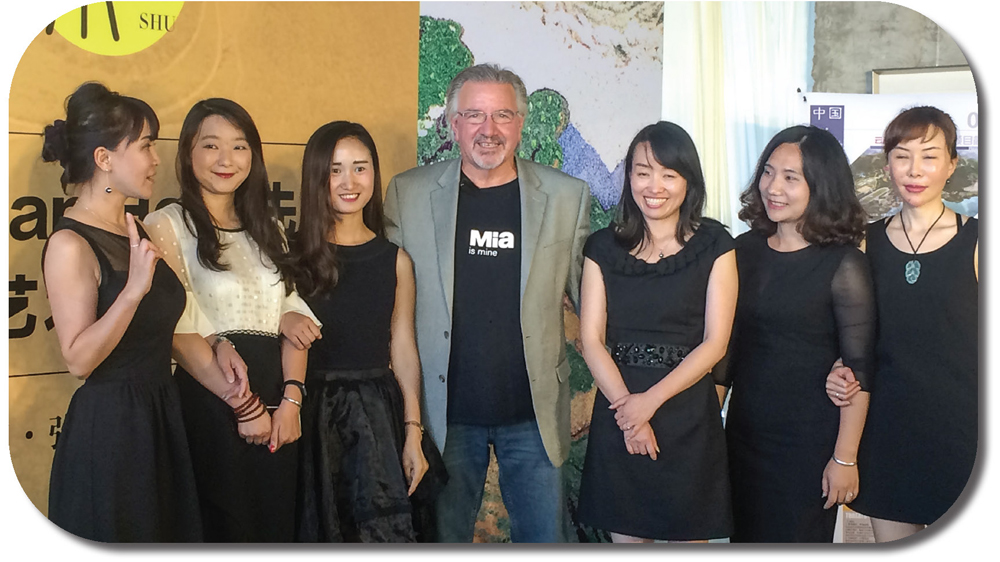
Stan Herd’s welcoming party from Jicheng – with city officials in Kunming-Yunnan Provence 2018
When Herd was working on the project “Young Woman of China,” in the Yunnan Province, in China, he said, “The Chinese engineers wanted to help me create the original outline with GPS, but I told them that I needed to do it the old-fashioned way, with a grid and flags, so I could get a feel for the ‘scale’ as I saw it developing in front of me. The grid, like the Chief Satanta grid, was 1 inch equaled 40 feet on the side of the mountain, because the image would be flattened to the viewer from across the small valley to another viewing hill. I purposely elongated the design on the grid, making the squares 40 feet wide and 50 feet tall.” Sculptors have historically used these “sweet points” to create a foreshortened view that looks more accurate from the location of the viewer. Herd uses technology to calculate the best foreshortened view for his work from the most-viewed vantage point.
He has used equations and mathematic portions such as the golden ratio, or golden rule, which form the basis for the Fibonacci sequence, a sequence in which each number is the sum of the two preceding ones and is based on Italian mathematician Leonardo of Pisa, was also known as Fibonacci. Fibonnaci numbers, as they are called on which the sequence is built, can be seen in history as early as 200 B.C. in India based on information provided by Wikipedia. Herd explains, “Math in the Fibonacci is called the ‘golden rule,’ as it is the closest thing in the universe to nature’s number. The Fibonacci is seen naturally in the pattern of many plants … in a hurricane (weather patterns), in astronomical patterns of the universe.”
He describes the concept of the Fibonacci earthwork as one that “would splay out around the world, following the trajectory and maybe affected by the curve of the earth … trackable … traceable, markable and finally intersecting with the other design (like in the ocean) … leaving a pattern connecting two disparate parts of the world.” He uses equations to figure out placement of his designs in air-traffic patterns. His interest—to change people through art—has not only challenged him but has changed him.
Math, Physics and Art Collide
Joey Orr, Ph.D., is an author, editor and founding member of the idea collective John Q. As the Andrew W. Mellon Curator and director of Arts Research Integration at KU’s Spencer Museum of Art, he serves as affiliate faculty in museum studies and visual art. Part of his work is to respond to the University researchers and their ideas, and help facilitate resources which “… can include space, programmatic frameworks, knowledge, networks, collections, archives and other institutional competencies.” He explains, “I am responding to the University’s research community. In other words, the curator becomes an access point for researchers and other audiences to author their own questions using the resources of the museum. Those resources can include space, programmatic frameworks, knowledge, networks, collections, archives and other institutional competencies.”
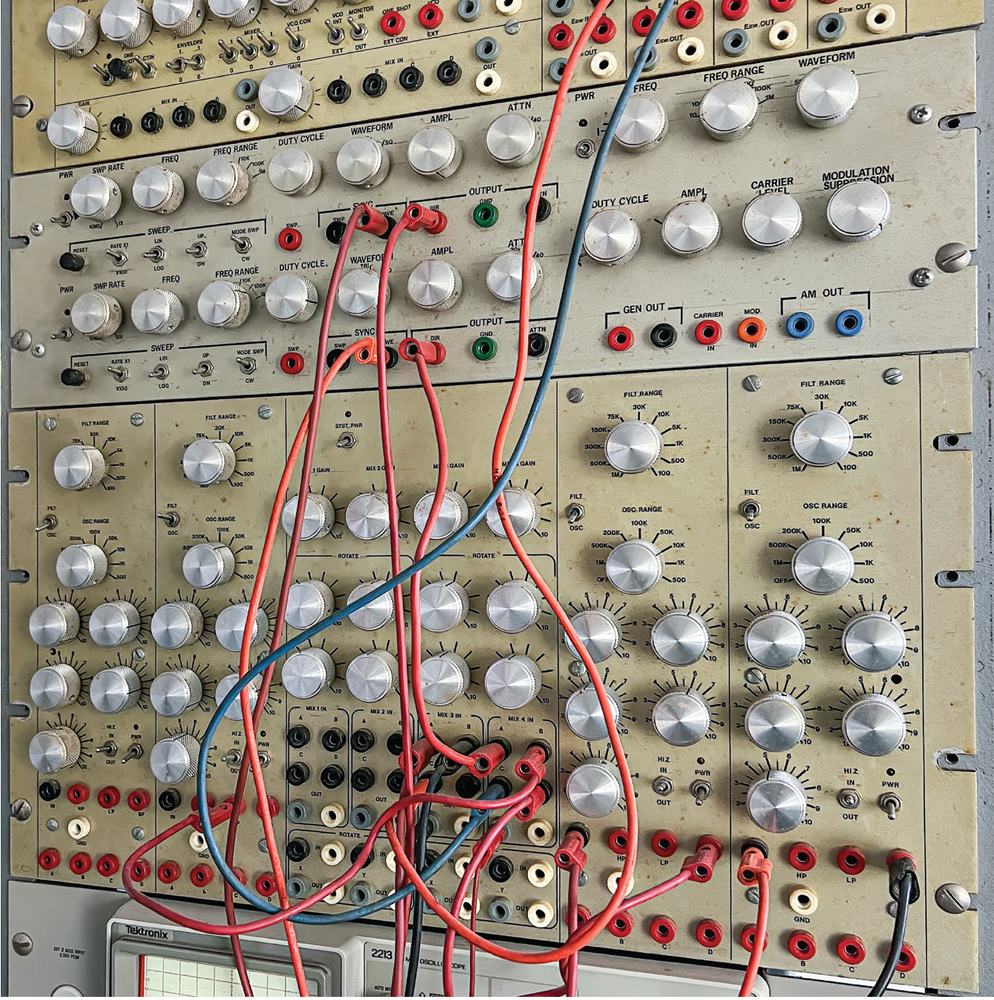
“Light Machine 5” – This is a detail of the control panel, associated circuitry, and patch used to create “Blossoming Pitch”. This device is connected to an oscillographic display and synchronized kinetoscope which provides an interactive color image from sound.
Orr co-authored, “How To Do Things With SVD: Mathematical Tool-Sharing From Physics to Reformative Research,” a two-year cross-culture collaboration of CERN, in Geneva, Switzerland, and the Spencer Museum titled “Collective Entanglements.” The research and work was finalized in a six-channel sound and video installation co-created by artist Janet Biggs, mathematician Agnieszka Miedlar and physicist Daniel Tapia Takaki, and curated by Orr.
The introduction to the research is an interesting conversation about how collaboration and communication through individuals with drastically different practices could find creative ways of working together. “In the physical sciences, entanglement refers to sets of data that cannot be described independently of one another. In a more general sense, it refers to a complicated relationship or complex situation. It can be very useful in describing interdisciplinary inquiry, as well,” the research explains. This looks almost like a descriptor to the relationships between Purna Bangere’s Purna Loka Ensemble, which created a series of definitions to be able to communicate and translate between the math to create the sounds.
The “Collective Entanglements” group traveled to CERN, which, according to its website, is the European Organization for Nuclear Research, one of the world’s largest and most-respected centers for scientific research. Orr says, “… the group used mathematical analytic tools to glean information from the experiments at CERN to compose the video used in the installation.”
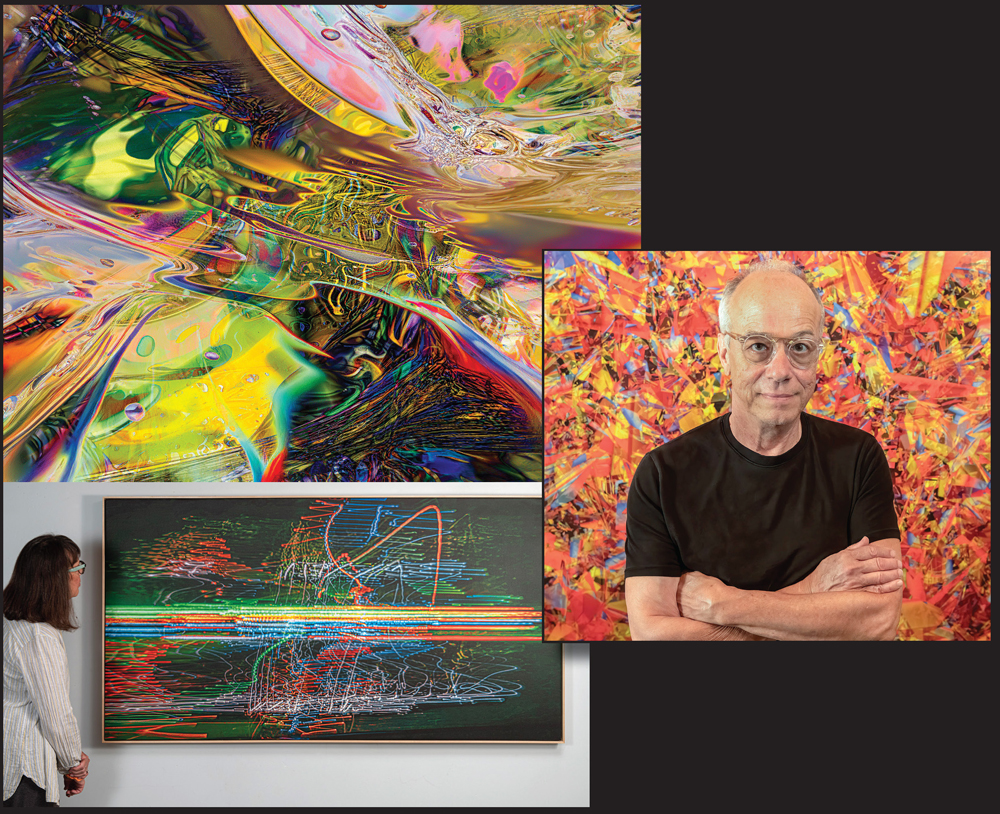
Tim Forcade standing in front of “Practicing Chaos”. This 96” x 120” image was created using 3D geometry to construct an impossible object, one that would be impractical or impossible to create in the physical world. “Re-garding Fluidity 2” – Tim creates all his images in a virtual studio using 2D and 3D software. This frees them from the limits of physicality. “Blossom-ing Pitch” is a 39″ x 73″ pigment print on canvas. It is a fraction-of-a-second view of a continuously changing visualization of sound in light. It is one of a series of compositions he created using an electronic synthesizer and display system I first designed and built in the mid-70’s.
Exploring Light
Traditionally trained visual artist Tim Forcade has been working with art and technology since the 1960s. “Seems to me math is implicit and imbedded in what most all of us do, artists included of course. The only difference between those of us using nontraditional media versus those using conventional is that the math is more visible in the former,” he says. “And that is mostly due to the fact that these new media are not fully formed enough to insulate the artist from their technical side.”
He says he uses math the same way he’s used brush and canvas: “I begin and interact until I discover a suitable answer to an unspoken but known premise. Math is simply another starting point without implicit truth. It’s just another way to make a mark,” Forcade explains. He has had the opportunity to work with everything from analog electronics to contemporary computational media and on the development of various graphics programs and plug-ins.
If you were to distill Forcade’s decades and decades of work down to a common essence, a singular focus, it is a passion and search for light. “I am utterly fascinated. I adore it. I recognize its origin, what it has passed through, reflected from—its experience—and for that, I am the moth,” his artist statement reads. He started his work as a painter but realized the core of what he was looking for could not be captured with this medium. Forcade’s search for light led to new processes and tools, such as “projectors, electronics, various motorized devices and, of course, photography, all in an effort to create evermore multilayered experiences of it.”
“Mathematics and technology have always played a part both directly (calculating RC time constants for circuitry) and incidentally (keying in floating point values to modify 3D material properties) in my artwork,” he explains. “I regularly use tools like simple translation functions (rotation, position and scaling) and more complex operations like plugging PBR (physics-based rendering) shader modules together to make virtual glass. It is the core contributor in creating the rich and marvelous computational media many of us employ. And given all these years of work, it seems embedded in my DNA. Even so, I would argue that math is in no way a stand-in for my artwork anymore than oil paint could be for a traditional painter ….”
In Forcade’s search for the essence of light, he pressed through a number of limitations in photography and created still lifes in the studio to create large light abstractions. These images were about seeing the “properties of light” rather than the objects themselves. In his never-ending quest, with past work in 2D and 3D programs, and his exploration with technology, he combined all of these elements together to delve into 3D computer graphics. He believes, “This is beyond painting or photography. It is a direct encounter with light’s essence.”
The diversity of these unique individuals and collaborators, and their approach to complex ideas is fascinating and beautiful. With the use of calculations, graphs, concepts, translations, expressions, new definitions and math-based tools, it’s exciting to see how these ideas can extend beyond the borders of what many people consider math and inspiring to see the almost limitless possibilities.


